Princess Anne Launches 50th Anniversary Tartan for Riding for the Disabled Association
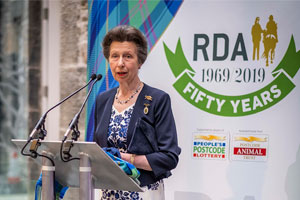
HRH Princess Anne Launches 50th Anniversary Tartan for Riding for the Disabled Association in Scotland A new tartan has been produced by Lachcarron of Scotland in celebration of 50 years of Riding for the Disabled Association (RDA) providing therapy through horses. The tartan was launched at an anniversary event in Edinburgh by RDA President, Her Royal Highness, The Princess Royal. The Princess met with volunteers and participants from around the country and was presented with her very own RDA tartan scarf by brothers Andrew and William McLeod. In addition to launching the tartan, the event was an opportunity to celebrate 50 years of RDA in Scotland. There are 54 individual RDA groups in the country, supporting almost 3000 adults and children with physical and learning disabilities to benefit from horses. In her address to guests, Princess Anne thanked the volunteers – over 2,500 in Scotland – without whom RDA would not be possible. She acknowledged the whole team effort that it takes to help make such a real difference to people’s lives through riding and carriage driving. Kim McCutcheon, Edinburgh and Borders Regional Chair for RDA, said “The tartan has been designed to incorporate the charity’s colours and it was lovely to launch it at a special celebration alongside our wonderful volunteers and participants. It would be fantastic to see the tartan worn across the whole of the UK and by purchasing a scarf you are helping to support another 50 years of therapy through horses.” The event was kindly held at the People’s Postcode Lottery office in Charlotte Square, Edinburgh. Clara Govier, managing director of People’s Postcode Lottery said ‘It has been an honour to support Riding for the Disabled in celebrating their fiftieth year here in Scotland, and see the launch of their new tartan. “They are an incredible charity, working across Britain to improve the lives of thousands of people. They are hugely popular with the players of People’s Postcode Lottery and have received over £2.5 million in funding since 2013.’ Celebrations for RDA’s 50th anniversary are continuing throughout the year around the UK.
London transport nightmare

London transport nightmare – New travel experiment reveals dire commutes for wheelchair users. London wheelchair users’ commutes take 49% longer than an able-bodied person’s on average A shocking 71% of London tube stations NOT fully accessible Disabled public transport users don’t feel that official apps or planners cater to their individual needs The ‘Going the Extra Mile’ experiment enlisted the help of five wheelchair users who tested five popular commuter journeys in London. The study pitted wheelchair users and able-bodied commuters against each other, with each starting their journey from the same point, at the same time and finishing at the same destination. The experiment was carried out in an effort to raise awareness of accessibility issues on public transport. Longer commutes and restricted access to London’s transport network With only 77 out of 270 stations fully accessible for wheelchair users, London’s transport options are often very limited for people with disabilities, making their journeys longer and filled with challenges. The five commuter journeys carried out during the course of this experiment took wheelchair users a combined total of 3 hours and 5 minutes to complete – 49% longer than able-bodied participants. A simple 9-minute commute from Liverpool Street to Kings Cross took an astounding 32 minutes for the wheelchair user, whose only option was taking a single bus route – bus 205, between the two central London stations, due to the lack of accessibility of the underground. Wembley Park to Westminster, another popular commute route, took 83% longer than what the ‘step-free access’ option on the TFL journey planner estimated for wheelchair users. Jennifer, who tested the Wembley Park to Westminster route, avoids public transport altogether in her daily life: “Today was the first time I’d used public transport since [getting injured]. I probably won’t use it again”. Despite living close to 5 underground stations, Karl, another participant, revealed he is limited to using buses 90% of the time, a less than ideal scenario as “buses are unpredictable so it can get really difficult”. Travelling from Victoria to Oxford Circus – a journey that can take a mere 4 minutes for an able-bodied person – took Karl 73% longer because he had to use a bus route instead. Planning the journey: a challenge in itself Throughout the travel experiment, wheelchair users flagged the difficulty of planning their public transport journey as a recurrent problem. Cross-checking several different apps seems to be the norm although participants find most of these unreliable or inaccurate. They state that, ultimately, their own experience is most reliable: “I usually use Citymapper to plan my journeys,” reveals Karl, “but I tend not to rely on it”. Other wheelchair users disclose the meticulous work involved in planning a journey: “I use Google Maps’ satellite function to determine the state of the pavement I’d need to take” and the unforeseen obstacles that can frustrate them and delay their journeys: “If the bus stops at an awkward place, it can be a struggle wheeling up”. What is more, official apps and tools consistently fail to cater to wheelchair users’ individual needs. For the Westminster bound journey, the TFL journey planner suggested a change at Finchley Road to use the Jubilee line, in a similar manner to the able-bodied passenger. In reality, staff at the starting point of the journey advised this was not possible, as the gap there would be far too large for an electric wheelchair. It transpired that the route recommended by the journey planner would have only worked for a manual wheelchair user, potentially leaving any electronic wheelchair users stranded had they taken the recommended route. London commutes are paved with obstacles Despite carefully planning their journeys for the experiment, wheelchair users still encountered unforeseen obstacles and challenges, some of which they say are a regular occurrence on their commutes on public transport Transport staff are often unprepared to offer assistance. One participant was left waiting on a bus arriving at King’s Cross station, as the driver closed the doors before she could exit using the ramp. She disclosed some bus drivers have difficulty activating the ramp: “It sounds ridiculous, but sometimes the driver might even ask me for guidance on how to activate it! Or lacking altogether… On the Westminster bound journey, Jennifer, the wheelchair user doing the experiment, faced an unexpected challenge, as there was no staff present to assist with setting up a ramp at the destination, despite assurance from the information point that this had been arranged for her. This left Jennifer with only one option: relying on help from a stranger to exit and navigate the station. Difficult transfers are another prevalent issue. To get to the London Bridge bus station from the London Bridge underground station, the wheelchair user needed to traverse an entirely uphill transfer. “I’m a very active wheelchair user, but even I was tempted to stop for a minute to catch my breath”, revealed Sau, who took part in the experiment. These are only a few of the dreadful obstacles wheelchair users face on a regular basis on their London public transport journeys. We must bring attention to these facts, as there’s so much more that can be done to make public transport more accessible, reliable and pleasant for wheelchair users. For more information on the survey, see: boltburdonkemp.co.uk
Glendurgan Garden to improve accessibility for visitors
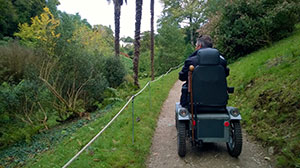
Glendurgan Garden, a National Trust property near Falmouth, recently introduced a brand new all-terrain mobility scooter, to help improve access for visitors. The all-terrain mobility scooter, known as a ‘Tramper’, allows visitors with mobility limitations to explore the Cornish gardens more fully, as well as visiting areas previously viewed as too difficult for them to access. Trampers are specifically designed to travel easily over uneven ground; allowing them to go up and down slopes, over bumps and tree roots, as well as through shallow puddles and mud. The Tramper at Glendugan was introduced a few weeks ago at the beginning of the season, and is available for visitors that struggle with walking – whether through age, or a permanent or temporary condition. You do not have to be registered disabled or have a Blue Badge to use it. Katie Reynolds, Visitor Experience Officer for the Glendurgan Garden, stated: “We’re thrilled to offer a Tramper here at Glendurgan. The steep valley paths in the garden can pose a challenge for some visitors; however, the Tramper navigates the garden with ease. “It’s been a real joy to see visitors return from their visit to the gardens with a beaming smile, saying how much it meant to them now they can visit the garden alongside their friends or family.” The Glendurgan Garden Tramper is one of 15 to be introduced by the Heritage Ability project, a three-year project funded by the National Heritage Lottery Fund. The project aims at helping to improve accessibility for disabled and Deaf people (using British Sign Language) to over 20 heritage sites in the South West. The 15 Heritage Ability Trampers purchased through the project will then operate as part of the Countryside Mobility Scheme, which offers to hire Trampers to visitors at nearly 50 beauty spots around South West England. Neil Warren, Manager of the Countryside Mobility, stated: “We’re delighted that the new Tramper has been so well received. I’ve been really impressed by the enthusiasm of the team at Glendurgan, who have helped to make their beautiful gardens easier to explore for those who would otherwise struggle. I’ve no doubt the Tramper will continue to prove popular with visitors and locals alike.” Visitors wishing to hire a Tramper for the first time can join the Countryside Mobility Scheme on arrival at Glendurgan, where staff will provide initial training. Membership, which then allows access to all the sites with Trampers, costs £10 for one year or £2.50 for a 2-week ‘Taster’ membership. For more information on membership or booking a Tramper visit the website. Members are strongly advised to phone and book the Tramper in advance of their visit to avoid disappointment. Both Heritage Ability and the Countryside Mobility Scheme are projects developed and run by Living Options Devon, a local user-led charity, where all of their initiatives are developed or supported by people who have a first-hand understanding of the challenges faced by disabled and Deaf people. Find out more
Inter Spinal Unit Games attracts 136 participants
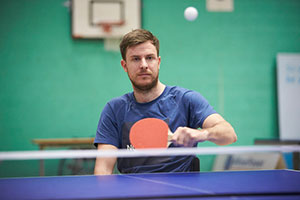
32nd Inter Spinal Unit Games attracts 136 newly paralysed sports participants from across the country in April 2019 WheelPower, the national charity for wheelchair sport, recently welcomed 136 newly paralysed men and women representing 15 spinal injury units from across the United Kingdom and Ireland to the 32nd Inter Spinal Unit Games at Stoke Mandeville Stadium from 9-11 April 2019. Some had never played sports before, and each person had a different story to share as to how they became paralysed, yet all were willing to give the 26 different sports and physical activity sessions a try, before entering competition sports between the Spinal Unit teams. The flagship event finally culminated in a gala dinner and awards ceremony for all the participants, sports leaders and supporters of the event to celebrate the achievements and effort of all the participants and winners. The participants received expert coaching and demonstrations from leading wheelchair sports athletes and experienced coaches. ‘Have-a-Go’ sporting activities included: wheelchair basketball, athletics, wheelchair badminton, wheelchair fencing, handigolf, archery, boccia, wheelchair rugby, shooting, cue sports, powerlifting and for the first time adapted and wheelchair yoga. Chris Keogh, the amateur footballer who became paralysed after dislocating his neck playing the sport he loves, took part in the Games. “It’s been going very well, it has been great to try out all the different sports, it’s been absolutely fantastic. Since I had my injury I haven’t really been involved in too much and this has been a great week to try out everything that I didn’t even think was possible to do in a wheelchair, including wheelchair fencing, which I didn’t even know existed 12 months ago! It’s been absolutely great to be in an environment where people are in a very similar situation to me where they’ve just been under a year injured, it’s been fantastic and I have made lots of new friends, so I’ve really enjoyed it”, comments Chris. Chris was scheduled to begin a new job at Price Waterhouse Cooper just after his accident.
Fitness for All
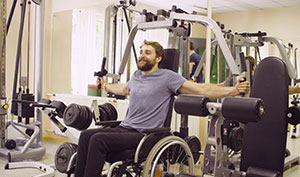
Exercise is important for your physical health and wellbeing and should be a staple part of everyone’s life. But older people and those with a disability 50 percent less likely to get involved in exercise, compared to younger or non-disabled people, according to research from Sport England. Of course, there can be some extra barriers to cross, but those with a disability and older adults are demographics that can benefit most from taking up regular exercise! Being active can help to reduce day-to-day issues such as strains, muscle wastage and problems with balance. Research suggests that exercise for the disabled is even more important than for those without disability. The reason behind this is the higher rates of factors such as obesity and diabetes, which have been recorded as being 66% more likely for those with a registered disability, says figures from NICE. Those with physical disabilities or age-related barriers are often perceived to live a more sedentary life with an inability to engage generally in strenuous exercise. This means that risks of the related coronary, digestive and respiratory diseases is likely to significantly increase. The Benefits of Exercise For older people or those living with a disability, there are ways and means of getting your fitness fix, so let’s look at why exercising is important to these groups. Physical benefits Regular exercise can: Improve stamina and muscle strength – this may really help with some forms of disability. You’ll gain the ability to maintain a higher level of independence, sense of freedom and quality of life. Exercise can control joint swelling and help alleviate pain in the process. Exercising increases bone density making any falls less likely to cause fractures. Exercise helps you to maintain your agility. Mental Health Benefits When we exercise, the brain releases endorphins that delivers a feel-good high. This can help ease anxiety and depression, and additionally, lift your mood. Exercise reduces stress. Exercising regularly helps to improve the quality of your sleep. Exercising in a group is a great way to try something different, meet new people and become part of a community. Helps to maintain brain function in older adults. Barriers Older people and those living with a disability can often face isolation. Someone with any disability is far more likely to withdraw socially, which can cause a lack of engagement in meaningful activities. Exercise presents an opportunity to engage in group activities or with the social environment which can prevent isolation. Possibly the biggest barrier which holds back older people or those living with a disability from participating in exercise, is mental: a lack of self-belief. Negative emotions about ourselves can reduce engagement, however a positive attitude towards our self can lead to new opportunities and friendships. When was the last time you tried something new? Maybe it’s time to find an exercise class you’ll love! Challenge Yourself! Push yourself to try something new, whilst meeting like-minded people. There is an abundance of sport-specific organisations, including those for disabled angling, dancing, walking and horse riding. Exercise doesn’t need to be working out in a gym, and different people will enjoy different activities. You can get creative! Think about other ways you can get active such as playing Wii Fit, gardening, and even cleaning. Keep it up! Motivation is a key part of keeping up a fitness regime. Here are some ideas to keep you going: · Find a friend to exercise with and motivate each other. · Book regular exercise sessions into your diary. Even if you do stretches at home, treat them as if you’re attending a class. · Being consistent is more important than cramming in as much as possible – do small, regular exercise sessions at first, then you can build up to doing more if you want to. · Do activities that you enjoy. If you find you don’t enjoy one activity or location, switch to another. · Find a coach – there are many professionals out there who have experience of fitness coaching for disabled people, or older adults. · Keep track of your progress using a step counter or heart rate monitor on your phone. Finding the balance It’s important for all people to try and create an exercise regime suited to their needs. Exercise does not necessarily mean going to the gym or running a marathon; chair-based exercises focusing on muscle strength and tone may have just as much impact on our general health and wellbeing! Chair Based Exercises you can try: Seated Flexibility – Stretches To stretch your hamstrings, calf and back sit up tall on your chair.Bring one of your feet away from your chair and straighten your leg. Place your heel on the ground and point your toes up to the ceiling. Whilst keeping your foot in this position, slowly reach down and try to touch your toes Hold this position for 10 seconds.Complete the same exercise with the other leg. Seated Muscular Strength and Endurance – Crunches Sitting at the edge of your chair (you can hold onto the chair seat for extra support) lift your legs up off the ground and lean back slightly.Bring your knees in towards your body as you breathe out.Then push the legs outwards and straighten the legs as you breathe in (Trying to keep the legs at hip height).Try to engage the core as much as possible.Repeat this exercise for as many times as you can! These exercises can be completed any time, and almost anywhere! So, let’s all start moving and improve our health, to support a healthy future. Bethany Ainsley is a wellness coach and founder of ActivCare Coaching, which serves to equip professionals and carers working with vulnerable groups with techniques to improve the wellbeing of people within their care. They do this via training, support and virtual classes for organisations and individuals to improve the wellbeing of older adults by increasing their levels of physical activity. https://www.nouveauwellbeing.com/
CMG and Regard Campaign For Change
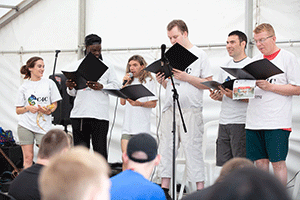
CMG and Regard, a leading provider of support for people with learning disabilities and associated complex needs, is proudly supporting self-advocacy group – Campaign 4 Change – which is led by 11 of the people it supports. Campaign 4 Change (C4C) is made up of members who passionately campaign on issues that affect people with learning disabilities and autism, both on a local and national scale. The Group, led by Mary, David, Darren, Mark, Chris, Samir, Frankie, Vicky, Alex, Leon and Stephen are fronting a joint campaign called #MindYourLanguage. This pioneering campaign is aimed at tackling the inappropriate and derogatory language which is sometimes used by care and health professionals, when speaking to or about people with learning disabilities and/or autism that they support C4C strongly believes that the language and words that people use are important in shaping people’s attitudes and, in turn, the negative use of language can have a detrimental impact, particularly for people who may already be feeling vulnerable or isolated. Additionally, the choice of negative words can also inadvertently affect the quality of support that a person receives, even being directed at them by a professional. CMG and Regard shares this vision, in keeping with the organisations core values. The Group launched its campaign at CMG’s People’s Conference and held a workshop at the (un)Ordinary Conference, where all speakers were people with learning disabilities. Alongside the joint #MindYourLanguage campaign, every member of C4C also campaigns on their own individual issues that they feel passionately about. This covers everything from people campaigning for the instalment of a pedestrian crossing on a busy local road which regularly affects people with disabilities, school children and elderly people, and tackling hate crimes towards people with learning disabilities by producing a short film to raise awareness, right through to spreading positive messages about the importance of staying active and healthy for good physical and mental wellbeing, and campaigning to raise awareness of issues faced by transgender people with learning disabilities. Bolstering its societal impact nationally, C4C is also involved in other national campaigns and groups, such as Supported Loving Network, the Solve Sleep-ins Alliance and Ideas Collective, amongst other social action groups. Peter Kinsey, Chief Executive of CMG and Regard, said: “We are incredibly proud of the hugely important work being undertaken by the C4C group. Each member is going above and beyond to ensure that the world around them is a better, safer and more tolerant place, not just for the sake of themselves but for others around them too.We have all been inspired by their excellent work and they are a true credit to CMG and Regard and the strong values and ethos that we collectively uphold.” For more information about the CMG and Regard supporting self-advocacy group – Campaign 4 Change please visit https://www.c4c4life.com
Go-Anywhere Underwear

Urinary incontinence can be caused by a variety of factors, including certain disabilities and medications, menopause, pregnancy and childbirth, constipation, being overweight or unfit, and just general loss of muscle strength due to ageing. It can have a huge effect on confidence, sometimes even restricting participation in everyday activities and enjoyment of life. While medical-grade disposable pants and pads are recommended for those with no bladder control who need full-void absorbency, people with light-to-medium bladder leakage now have a more fashionable, affordable and environmentally friendly option. Confitex’s line of washable absorbent underwear for men and women is now available on confitex.co.uk. Made from high-quality fabrics with a built-in panel of Confitex’s unique leakproof and odour-resistant textile, they look, feel, wash and dry just like regular underwear and require no pads or liners. Because there’s no messing around with tricky packaging or adhesive strips, they promote independence and self-sufficiency. And because they pull up just like normal underwear, they’re suitable for people, such as those with dementia, who find pads and shields disorienting, unfamiliar and uncomfortable, and prefer the feeling and convenience of real fabric underpants. Originally created to keep extreme athletes dry,Confitex’s absorbent textile is breathable and hypoallergenic, with a quick-wicking inner layer designed to draw urine away from the skin and prevent skin irritation. It’s also 100 percent plastic-free, so you can pop Confitex underwear straight into the washing machine and tumble dryer, just like ordinary underwear. And as well as being better for your skin and better for the environment, Confitex is also better for your wallet. Lab-tested to withstand up to 200 washes without any reduction in performance, it will save you money in the long term when compared to disposable incontinence pads, nappies, shields and guards. Confitex restores confidence and dignity and lets you get on with life. It is available in a variety of styles for men and women online at confitex.co.uk. SPECIAL OFFER FOR U CAN 2 READERS: ORDER ONLINE AT CONFITEX.CO.UKAND USE THE CODE UCAN2 TO RECEIVE A 20% DISCOUNT! Offer available online only and to be redeemed by 31 August 2019. Subject to availability and not to be used in conjunction with any other offer. See confitex.co.uk for full terms and conditions.
Accessible attractions to visit across the UK
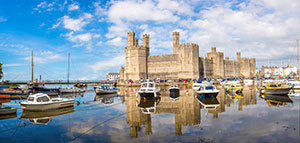
Sometimes, you can for family members who be stuck for ideas are visually impaired, while of where to go as a wheelchairs are available at family for a day out the attraction too. We have put together a list of easily- accessible attractions for families to visit in the UK. For chocolate lovers: Cadbury WorldIs there anything cooler than a day out at a real-life chocolate factory? You can find Cadbury World just a few short miles south of Birmingham city centre and then enjoy being taken ona self-guided exhibition tour which encompasses various interesting and exciting zones. Prepare to go on a thrilling adventure within the 4D chocolate adventure experience, learn how your favourite treats are made in the interactive manufacturing zone, step back in time to witness how the Cadbury brand came about at the Bull Street zone and much more. Of course, it’s also ‘essential’ to treat your sweet tooth when the tour ends. Call into the Cadbury World Café and make a purchase or two at the World’s Biggest Cadbury Shop.Accessible features at Cadbury WorldIf you’re disabled, you can receive a large print guide and concessions throughout the tour. There’s also touch and feel key props throughout the exhibition user and have a RADAR key, you can access a state-of- the-art Changing Places facility. This incorporates a height-adjustable sink unit, a height-adjustable changing bed, rails and support arms, an automatic toilet, a modesty screen and a ceiling screen. For those after a fun history lesson: Caernarfon CastleYou won’t mistake this World Heritage site as Wales’ Caernarfon Castle has an intimidating presence. Created by King Edward I on the banks of the River Seiont in the north-west of Wales, this castle still looks incredibly threatening centuries later. As well as imagining how history played out many years ago though, youngsters are also sure to want to check out Caernarfon Castle’s recently opened 3D attraction — a feature which grants them the opportunity to take control of menacing, fire-breathing, holographic dragons. The Royal Welch Fusiliers Museum is another must- visit part of the castle. Situated within two towers of the World Heritage Site, history fans will be able to take in how the Royal Welch Fusiliers Regiment won 14 Victoria Crosses during their courageous battles. A number of famous writers also served within the Royal Welch Fusiliers in World War One — including Robert Graves, David Jones, Frank Richards, Siegfried Sassoon and “Hedd Wyn” — and some of their most memorable words can be heard echoed throughout the museum. Accessible features at Caernarfon CastleYou may be under the impression that a Medieval times fortress wouldn’t be accessible for all the family. However, you’d be wrong when it comes to Caernarfon Castle. After getting input from a local access group, access to all of the castle’s inner wards are now granted via a purpose-built access ramp alongside two sets of steps. Wheelchair access is then accessible throughout the entire lower level of the World Heritage Site. For those wanting to connect with nature: Chester ZooYou won’t be stuck for things to do if you visit Chester Zoo. After all, the zoo is home to more than 21,000 of the world’s most endangered and exotic animals! Where will you set your sights on first? One of nature’s fiercest hunters, the Komodo dragon, can be found at the Dragons in Danger habitat, for instance, while a breeding herds of Asian elephants are among the animals who go about their daily lives at the Asian Forest habitat. Even when you venture away from the 15 animal habitats, you still have a lot of areas to explore. Those with a passion for plants will love Chester Zoo’s botanical gardens — all 125 acres of it spread across various themes — while the attraction’s nature reserve is ideal for getting close to local wildlife within a tranquil outdoor space.Accessible features at Chester ZooIf you are visiting Chester Zoo with assistance dogs, you’ll be pleased to hear that Registered Assistance Dogs are able to enter every section of the site, with a map available which details an assistance dog-friendly route.
Double Success for Group SRS at Care at Home & Housing Support Awards
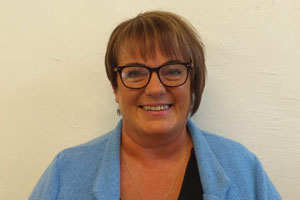
Two outstanding people from Group SRS (Scottish Recruitment Solutions) have been shortlisted for a Care at Home & Housing Support Award from Scottish Care. Jill Summers and Gail Millar are finalists for the prestigious awards which recognises individuals and teams from around the country for delivering exceptional care. As the Head of Compliance and Business Development for Scottish Recruitment Solutions Training, Gail Millar has been shortlisted for the Training, Learning and Staff Development Award for her work developing a team of fully skilled trainers to deliver quality training for all employees at SRS Care Solutions. Gail’s team have also been integral in the opening of training suites in Glasgow, South Lanarkshire, the Borders and Aberdeen, making learning opportunities more accessible to employees in these areas. Jill Summers, who is a Service Manager at SRS Care Solutions’ Hawick office, is a finalist in the Management and Leadership category. In her time since joining Scottish Recruitment Solutions Care Solutions one year ago, Jill has grown her care team from eight carers delivering 150 hours of home care per week to 70 carers providing 2000 hours of care. A relatively young company, Group Scottish Recruitment Solutions was established in 2015 by Mark Richardson and Peter Lumsden who have a combined wealth of experience and knowledge of both the care and recruitment sector. Since then, the company has grown rapidly and has diversified in that time into complimenting business areas including SRS Care Solutions and SRS Training which fall under the Group SRS umbrella. Both new additions to Group SRS in the past year, Gail and Jill’s awards recognition has come as no surprise to the team. Mark Richardson is Owner and Operational Director of SRS. Having worked closely with Gail and Jill, he is delighted to see their hard work pay off, and so quickly. He said: “It is fantastic to see two members of our team at Group SRS recognised by Scottish Care for these prestigious awards, especially since we are a fairly new company in the care sector. Both Gail and Jill have delivered outstanding work since joining SRS. Since setting up our Hawick office, we have become the largest provider of care at home in the Borders and that is largely down to Jill. “Gail’s work in our SRS Training division has also been exceptional. Having only joined us in October 2018, Gail has worked with her team of trainers to develop interactive training sessions run in our new, more accessible training suites across Scotland which have made massive difference to our care employees. We wish them both luck for the awards next month.” Both finalists are equally proud to be shortlisted for a Care at Home and Housing Award. Jill said: “I love working as a service manager for SRS Care Solutions in the Hawick office, which is my home town, and working in the care sector – particularly home care. To be recognised by the care industry for doing what I love is amazing and I’m very proud to be a finalist.” Gail, who has worked in the care sector for 24 years, added: “I’m really honoured to be nominated and so pleased that people have thought this highly of me in such a short space of time, having only joined SRS Training last year. This nomination isn’t just for me. It’s for al the trainers and is testament to all they do.” The winners will be announced at a glittering ceremony at the Marriott Hotel in Glasgow on May 17, 2019. To find out more about SRS Care Solutions visit www.srscaresolutions.com and information on SRS Training visit www.srstraining.com